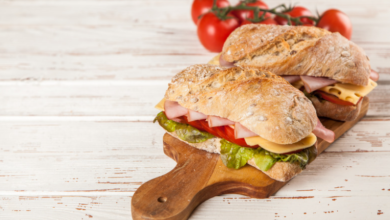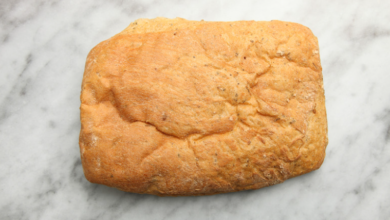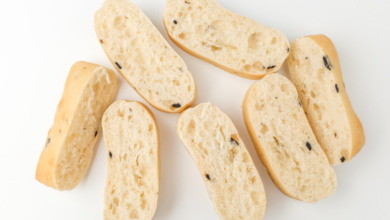Make ciabatta bread without a mixer? It’s possible!

What To Know
- Place the dough in a lightly oiled bowl, cover it with plastic wrap, and let it rise in a warm place for 8-12 hours, or until doubled in size.
- Cover the loaves with a damp cloth and let them rise in a warm place for 1-2 hours, or until they have almost doubled in size.
- What can I use to score the loaves if I don’t have a scoring knife.
Yes, you absolutely can! While a mixer expedites the process, it’s entirely possible to create delectable ciabatta bread using manual techniques. This guide will provide you with step-by-step instructions and helpful tips to achieve perfect ciabatta without the need for a mixer.
The Magic of Ciabatta
Ciabatta is an Italian bread famous for its large, open holes and airy texture. Its name, meaning “slipper” in Italian, refers to its distinctive flat, oblong shape. Ciabatta dough is characterized by its high hydration, which results in a crispy crust and a soft, chewy interior.
Ingredients You’ll Need
- 500g (4 cups) strong bread flour
- 10g (2 tsp) active dry yeast
- 10g (2 tsp) salt
- 400ml (1 2/3 cups) warm water (105-115°F)
Step-by-Step Instructions
1. Activate the Yeast
In a small bowl, combine the warm water and active dry yeast. Stir and let stand for 5-10 minutes, or until the yeast foams. This indicates that the yeast is active and ready to use.
2. Mix the Dough
In a large bowl, combine the flour and salt. Add the activated yeast mixture and stir until a rough dough forms. The dough will be very sticky and wet.
3. Autolyse
Cover the bowl with plastic wrap and let the dough rest for 30-60 minutes. This process, known as autolyse, allows the flour to absorb the water and the gluten to develop.
4. Stretch and Fold
Uncover the dough and place it on a lightly floured surface. Begin stretching and folding the dough gently. To do this, grab one corner of the dough and stretch it up and over the center. Repeat this process with the other three corners.
5. Rest and Repeat
Cover the dough again and let it rest for 15 minutes. Repeat the stretching and folding process 3-4 more times, resting the dough for 15 minutes between each fold.
6. First Rise
Place the dough in a lightly oiled bowl, cover it with plastic wrap, and let it rise in a warm place for 8-12 hours, or until doubled in size.
7. Shape the Loaves
Once the dough has risen, divide it into two equal pieces. Shape each piece into an oblong loaf and place them on a baking sheet lined with parchment paper.
8. Second Rise
Cover the loaves with a damp cloth and let them rise in a warm place for 1-2 hours, or until they have almost doubled in size.
9. Bake
Preheat your oven to 450°F (230°C). Score the loaves with a sharp knife and bake for 25-30 minutes, or until golden brown and crusty.
10. Cool and Enjoy
Remove the loaves from the oven and let them cool on a wire rack before slicing and enjoying.
Tips for Success
- Use high-quality bread flour with a protein content of at least 12%.
- Ensure the water is warm but not too hot, as this can kill the yeast.
- Be patient with the stretching and folding process. It may take some time, but it’s essential for developing the gluten and creating the characteristic holes.
- Don’t overproof the dough, as this can result in a dense loaf.
- Score the loaves before baking to allow for even expansion.
- Let the loaves cool completely before slicing to prevent tearing.
Takeaways: The Joy of Homemade Ciabatta
Crafting ciabatta bread without a mixer is a rewarding experience. By following these steps and embracing the art of manual breadmaking, you can create delicious, artisanal-style bread that will impress your taste buds and fill your home with the tantalizing aroma of fresh-baked goodness.
Frequently Asked Questions
Q: Can I use instant yeast instead of active dry yeast?
A: Yes, you can substitute instant yeast by reducing the amount to 3g (1 tsp).
Q: What can I use to score the loaves if I don’t have a scoring knife?
A: You can use a sharp serrated knife or even a pair of scissors.
Q: Can I store ciabatta bread?
A: Yes, ciabatta can be stored in an airtight container at room temperature for up to 3 days.





